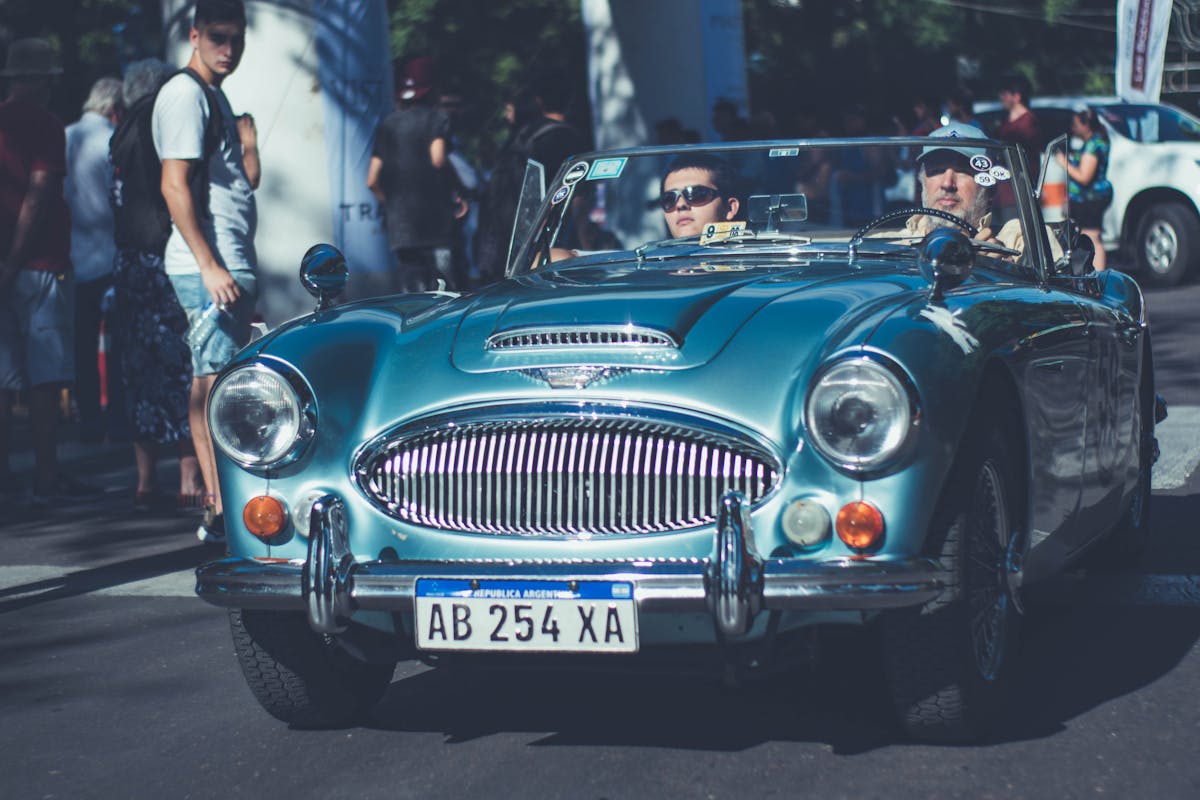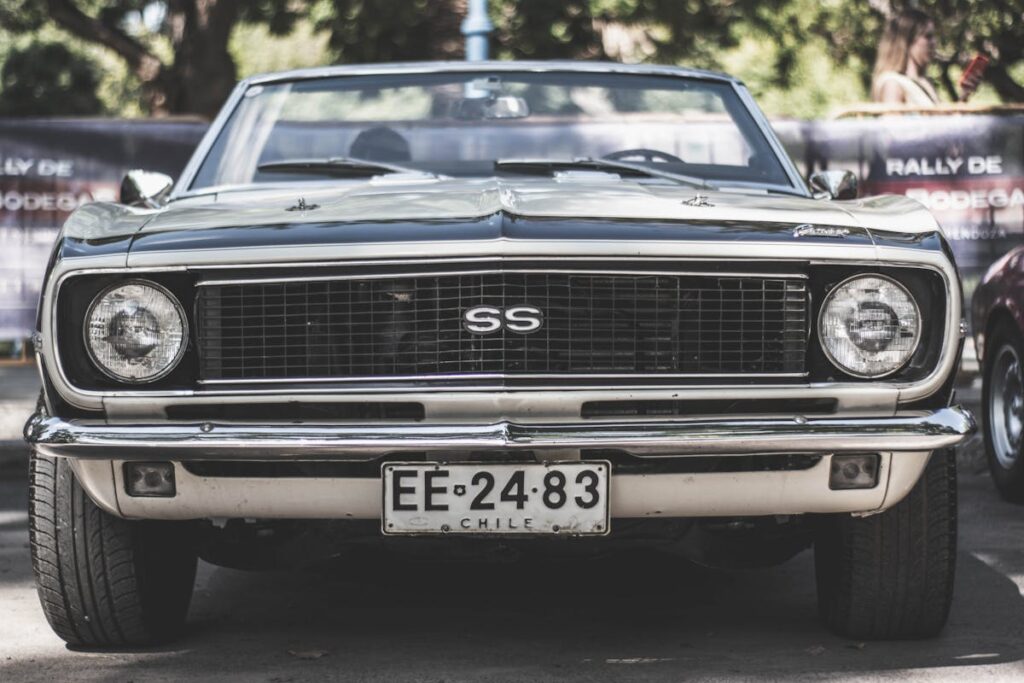The allure of classic cars lies not only in their timeless aesthetic appeal but also in the sense of nostalgia they evoke. However, beneath the polished exterior and the purring engine, these vintage beauties often harbor a range of issues. From structural concerns due to rust, to the high costs of maintenance and scarcity of replacement parts, owning a classic car can present unique challenges. Add to this the fact that these vehicles often lack modern safety features and suffer from inefficient fuel consumption, and it becomes clear that the classic car ownership experience requires a good deal of insight and preparedness.
The Menace of Rust
While classic cars can be a joy to own and operate, one of the most common and destructive problems they face is the menace of rust. Rust is an insidious issue that affects the integrity of the vehicle, diminishing not only its aesthetic appeal but also its structural strength. It is particularly damaging to the underbody and chassis, which are frequently exposed to moisture and road salts, leading to accelerated corrosion.
Rust prevention is a critical step to preserving the lifespan and value of classic cars. This involves regular cleaning and waxing, particularly of the underbody, to remove corrosive agents. Applying rust-proofing agents or anti-corrosion sprays can also provide an additional layer of protection.
When rust has already set in, rust treatment becomes necessary. The rusted area should be thoroughly cleaned and any loose rust removed. Specialized rust converters can be applied to neutralize the rust and prevent further corrosion. In severe cases, rusted components may need to be replaced entirely.
Outdated Safety Features
Maneuvering the roadways in a classic car can be a thrilling journey back in time, but it also exposes the driver and passengers to the realities of outdated safety features. These classic beauties were manufactured during a period when safety regulations were far less stringent than they are today. Consequently, they often lack the safety upgrades that modern vehicles are equipped with.
The absence of these modern safety features in classic cars means that they often fare poorly in crash testing compared to contemporary models. This is primarily due to:
- Absence of airbags: Modern vehicles have multiple airbags that offer protection from different angles. Classic cars, however, often lack even a single airbag.
- Lack of anti-lock braking systems (ABS): This feature prevents wheel lock-up during braking, thereby maintaining the vehicle’s steering ability. Classic cars typically do not have ABS.
- Inadequate crumple zones: Modern cars are designed with crumple zones that absorb impact energy during a collision. Classic cars often lack these zones, increasing the risk of injury.
Therefore, while the allure of classic cars is undeniable, potential buyers should be aware of the trade-off regarding outdated safety features and potential risks. Safety upgrades, while often costly, are a worthy investment for those wishing to regularly drive these vintage vehicles.
Scarcity of Replacement Parts
Maneuvering the world of spare parts for classic cars often poses a formidable challenge. Unlike the contemporary vehicles of today, which benefit from a constant and abundant supply of components, classic cars suffer from a scarcity of replacement parts. This is mainly due to the fact that many of the original manufacturers of these parts have long since ceased production.
Replacement part sourcing for classic cars can be an intimidating task, as it requires extensive knowledge and a keen eye for authenticity. Original parts not only guarantee the proper functioning of the vehicle but also contribute to its overall value. Consequently, the scarcity of these parts can greatly hinder restoration efforts and pose a constant obstacle for classic car enthusiasts.
However, the advent of aftermarket solutions has somewhat alleviated this issue. These solutions often replicate the original parts to a high degree of accuracy, providing a viable alternative for those unable to source original components. While aftermarket parts may not carry the same prestige or value as their original counterparts, they do offer a degree of flexibility and availability that is otherwise lacking in this niche market.
Nevertheless, the scarcity of replacement parts remains a key issue in the world of classic cars, requiring careful navigation and informed decision-making.

High Maintenance Costs
Diving head-first into the world of classic cars often entails grappling with high maintenance costs. As a vintage vehicle owner, you need to be prepared for this financial burden. These cars often demand more attention and care than their modern counterparts, with insurance challenges and repair budgeting often becoming significant concerns.
Insurance for classic cars can be a major expense due to the perceived risk associated with maintaining and protecting these valuable assets. Insurance companies often charge higher premiums for these types of vehicles, which can add to the overall cost of ownership.
To manage these costs effectively, a well-planned and disciplined approach to repair budgeting is essential. Maintenance costs can quickly escalate if not properly managed, and unexpected repairs can put a significant dent in your budget.
Consider the following:
- Regular servicing and maintenance checks can help identify potential issues before they escalate, potentially saving you significant repair costs in the long run.
- Always budget for unexpected repair costs. It is better to be prepared for unforeseen expenses than to be caught off guard.
- Consider investing in an insurance policy that specifically caters to classic cars. This can often provide better coverage at a more affordable rate.
Inefficiencies in Fuel Consumption
Inefficiencies in fuel consumption are a prevalent issue in classic cars, largely stemming from outdated engine technologies and designs. These inefficiencies can lead to increased costs and environmental impact, making it a significant consideration for classic car owners. Consequently, understanding the causes and potential solutions for improving fuel consumption is a vital aspect of owning and maintaining these vehicles.
Causes of Fuel Inefficiency
The mystery of fuel inefficiency often plagues classic car enthusiasts, leaving them baffled and frustrated. The causes of this inefficiency are multifaceted, often relating to both mechanical issues and driving habits. Understanding these factors is essential in the quest for ideal fuel consumption.
Carburetor adjustments and engine tuning can greatly impact fuel efficiency. Incorrect tuning or a poorly adjusted carburetor can cause the engine to consume more fuel than necessary. In addition, the ignition timing, if not set correctly, can also lead to less than ideal fuel use.
- Fuel quality and additives can affect the combustion process, resulting in inefficient fuel use.
- Air filter condition and tire pressure can influence the engine’s workload, affecting fuel consumption.
- Weight reduction and maintaining a strict maintenance schedule also play significant roles in fuel efficiency.
Driving habits, such as aggressive acceleration and high-speed driving, can substantially increase fuel consumption. Regular maintenance, focusing on elements like air filter changes, tire pressure checks, and scheduled engine tuning, can mitigate these inefficiencies. Therefore, understanding the causes of fuel inefficiency helps owners to appreciate the intricacies of their classic cars and cultivate habits that contribute to improved fuel consumption.
Improving Fuel Consumption
With a keen understanding of the factors affecting fuel inefficiency, classic car enthusiasts can pivot towards strategies for improving fuel consumption. One effective approach involves the use of fuel additives, which can boost fuel octane levels and enhance the overall performance of your engine. Regular maintenance, such as carburetor adjustments and periodic engine tuning, also plays an essential role in optimizing fuel consumption.
Driving habits greatly impact fuel economy. Aggressive driving practices like rapid acceleration or excessive speeding can lead to high fuel consumption. Consequently, adopting a smooth and steady driving style can substantially improve your vehicle’s fuel efficiency.
Another factor to take into account is the car’s weight. Weight reduction can greatly improve fuel economy, as less energy is needed to move a lighter vehicle. Regularly checking and adjusting the tire pressure and keeping the air filters clean can also lead to improved fuel consumption.
Issues With Overheating
Overheating is an issue that plagues many classic cars, and can often lead to significant engine damage if not addressed promptly. Understanding the root causes of overheating, the potential damage effects it can have on the vehicle, and preventative measures to avoid such problems are essential for classic car owners. In the following sections, we will explore these aspects in detail, providing the necessary knowledge to mitigate overheating issues in vintage automobiles.
Causes of Overheating
Classic car enthusiasts often encounter an all-too-familiar adversary – overheating. It’s a common issue that can be attributed to a variety of causes, all requiring different solutions. Understanding the causes of overheating in classic cars requires knowledge of their cooling systems, engine block, and the factors affecting their temperature gauge readings.
- Cooling systems and radiator maintenance: Overheating can often be traced back to the cooling systems. In classic cars, radiator maintenance is essential. Any blockages can prevent heat dissipation, leading to overheating.
- Thermostat failure and coolant types: A malfunctioning thermostat can cause incorrect temperature readings, which in turn can lead to overheating. The type of coolant used also plays a notable role. Using the wrong coolant can cause harm to the engine block.
- Fan operation, hose integrity, and water pump: Fan operation is critical in maintaining the engine’s temperature. Hose integrity is necessary for the proper flow of coolant. The water pump, another important component, facilitates coolant movement, and its malfunction can lead to overheating.
Addressing these issues promptly and effectively can greatly enhance the performance and longevity of your classic car. Utilize this knowledge to prevent overheating and enjoy a smoother ride.
Overheating Damage Effects
The damaging effects of overheating on classic cars can be severe and extensive, impacting various facets of performance and durability. This is often due to the failure of the cooling systems or neglect of radiator maintenance, both vital to the upkeep of these vehicles.
A car’s engine operates most efficiently at high temperatures, but when it crosses a certain threshold, the damage can be catastrophic. Overheating can warp the cylinder heads, causing a blown head gasket, which is a costly repair. It can also result in cracked engine blocks or severe damage to the pistons and valves.
The cooling systems in classic cars, which include the radiator, water pump, and thermostat, are essential for regulating the engine’s temperature. If these components are not maintained or fail, the engine can overheat. The radiator, in particular, requires regular maintenance to prevent rust, corrosion, and blockages that can hinder its efficiency.
Furthermore, overheated oil can lose its ability to lubricate, leading to increased engine wear. Over time, this can decrease the lifespan of these vehicles considerably. Therefore, understanding the damaging effects of overheating is vital for the preservation of classic cars.
Preventing Overheating Issues
Regularly maintaining your classic car’s cooling system is essential in preventing overheating issues, a common setback that, if not addressed, can lead to severe damage and reduce the vehicle’s lifespan. An efficient cooling system circulates coolant through the engine, absorbing heat and dispersing it through the radiator. Over time, however, the system can degrade and lose efficiency. Consequently, it’s critical to verify proper radiator maintenance and regular inspection of the cooling systems.
To prevent overheating, consider the following steps:
- Regularly inspect the coolant’s condition and level. Dirty, depleted, or low coolant can’t efficiently absorb and disperse heat, leading to overheating.
- Keep the radiator in ideal condition. Confirming it’s clean, free of leaks, and the cooling fins are straight and clear of debris is critical.
- Check the thermostat often. A malfunctioning thermostat can prevent the coolant from circulating when the engine gets hot.
Difficulty in Finding Expert Mechanics
Maneuvering the world of car repair can be an intimidating task, especially when it pertains to vintage vehicles. One common issue classic car owners face is the difficulty in finding mechanics with specific training and vintage expertise. A classic car is not just any car; it’s a piece of history. Its repair and maintenance require a nuanced understanding of the vehicle’s era-specific technology and manufacturing techniques.
In the modern era of mechanized assembly lines and computer diagnostics, mechanic training tends to focus more on contemporary vehicles. The scarcity of mechanics trained in vintage expertise poses a significant challenge. These professionals are well-versed in the unique quirks and features of older vehicles, from the intricacies of repairing a carburetor to adjusting a manual choke. Their skill set is often the product of years of experience and dedicated study, making them a rare find in today’s market.
The scarcity of expert mechanics can lead to longer wait times for repairs and potentially higher costs. It also increases the risk of improper repairs, which can cause further damage to the vehicle. Consequently, finding a mechanic with the right training and vintage expertise is critical for preserving the integrity and value of a classic car.
The Problem of Imperfect Seals
In addition to the challenge of finding qualified mechanics, another prevalent issue faced by classic car owners is imperfect seals. Seal deterioration is a common problem that can lead to various complications for these vintage vehicles. This issue arises from the natural aging process, which weakens the material of the seals and causes them to become less effective over time.
Imperfect seals can result in:
- Oil or fluid leaks, negatively impacting the performance and possibly causing significant damage to the vehicle.
- Deterioration of engine performance due to compromised compression.
- Incursion of external elements, such as dirt and water, which could lead to corrosion or other types of damage.
Leak detection is essential in identifying and addressing issues related to imperfect seals. Classic car owners should remain vigilant of any signs of leakage and should conduct regular inspections to guarantee the best functioning of their vehicles. Additionally, it’s advisable to seek professional help when dealing with seal deterioration, given the intricate nature of these components. This way, owners can secure the longevity and maintain the originality of their classic cars.
Frequently Asked Questions
How Does a Classic Cars Value Depreciate Over Time?
Classic car value depreciation is a complex process. Factors like rarity, condition, and demand influence value appreciation. However, high maintenance costs and wear and tear over time can greatly impact the car’s overall value.
What Factors Determine a Classic Cars Insurance Premium?
A classic car’s insurance premium is determined by various factors including the car’s value, usage, storage conditions, and owner’s driving history. The insurance market also uses specific valuation criteria for setting these premiums.
Are There Any Special Driving Techniques for Classic Cars?
Yes, special driving techniques for classic cars do exist. They mainly involve refined driving habits and shifting techniques, focusing on gentle acceleration, careful braking, and smoother gear changes to preserve the car’s mechanical integrity.
What Are Some Common Electrical Problems in Classic Cars?
Common electrical problems in classic cars include wiring issues, battery problems, lighting failures, and ignition troubles. These stem from aged components, corrosion, and outdated technology, necessitating frequent checks and maintenance for peak performance.
How Often Should Classic Cars Be Driven to Keep Them in Good Condition?
Regular driving of classic cars, ideally once a week, is essential for engine maintenance and tire care. This routine use helps prevent mechanical issues, keeps the engine lubricated, and prevents tire flat spots.

